
|
|
Font Size:
|
||||
|
|
|
|
||||
STATISTICAL BRIEF #82:
Access to Care and Use of Preventive Services, 2002: Estimates for the U.S. Civilian Noninstitutionalized Population, Age 18 to 64
Highlights
- Men age 18 to 64 were more likely to be uninsured than women in 2002 (17.8 percent versus 13.6 percent).
- Uninsured individuals age 18 to 64 were the most likely to lack a usual source of care (women 42.2 percent and men 60.3 percent).
- Individuals age 18 to 64 with only public health insurance had a higher mean expense for health care than those with private or no health insurance (women $5,316 and men $6,048).
- Individuals age 18 to 64 with fair or poor health status had the highest mean expense for health care (women $7,505 and men $7,341).
- Women age 40 to 64 with private health insurance were more likely (77.2 percent) to obtain mammography screening within the last two years than women with only public or no health insurance.
- Women age 18 to 64 with private health insurance were more likely (87.0 percent) to obtain a Pap test within the last three years than women with only public or no health insurance.
- Men age 50 to 64 with private health insurance were more likely (58.7 percent) to obtain a prostate-specific antigen (PSA) test within the last two years than men with only public or no health insurance.
Introduction
This Statistical Brief examines the relationship between health insurance coverage status in 2002 and access to care and the use of health care, including preventive services, among individuals between the ages of 18 to 64 in the U.S. civilian noninstitutionalized population in 2002. Comparisons are made between men and women. Only differences between estimates that are statistically significant at the 0.05 level are discussed in the text.
Findings
In 2002, men age 18 to 64 were more likely to be uninsured in comparison to women: 17.8 percent of men were uninsured while 13.6 percent of women were uninsured. The majority of men and women had private health insurance, at 75.8 percent and 76.1 percent, respectively; and 6.4 percent of men and 10.3 percent of women were covered by only public health insurance. (figure 1)
Based on health insurance status, uninsured women and men age 18 to 64 were the most likely to lack a usual source of care in 2002, at 42.2 percent and 60.3 percent, respectively. For those with only public health insurance, 20.1 percent of women and 22.6 percent of men lacked a usual source of care. Women age 18 to 64 who had private health insurance were the least likely to lack a usual source of care (15.3 percent). (figure 2)
Individuals age 18 to 64 with only public health insurance had a higher mean expense for health care than those with private or no health insurance in 2002. Women with only public health insurance had a mean expense of $5,316 while men with only public health insurance had a mean health care expense of $6,048. The uninsured had the lowest mean expense for health care. Uninsured women had a mean expense for health care of $1,241; uninsured men had a mean expense of $659. The mean expense for health care for women and men with private health insurance was $3,042 and $2,082, respectively. (figure 3)
Based on health status, individuals age 18 to 64 with fair or poor health status had the highest mean expense for health care in 2002, at $7,505 for women and $7,341 for men. Men had a lower mean health care expense for excellent ($915), very good ($1,424), and good ($2,274) health status than women ($1,654, $2,256, and $3,225, respectively). (figure 4)
Women age 40 to 64 covered by private health insurance were more likely to obtain mammography screening, 59.5 percent within the last year and 77.2 percent within the last two years, than women with only public or no health insurance. Women with no health insurance coverage were the least likely to have mammography screening. In 2002, 31.5 percent of uninsured women had mammography screening within the last year while 44.5 percent had such within the last two years. Among women with only public health insurance, 48.2 percent had mammography screening within the last year and 63.7 percent within the last two years. (figure 5)
The percentage of women obtaining a Pap test varied by health insurance status in 2002. Women age 18 to 64 with only public health insurance or those who were uninsured were less likely to have received a Pap test than women with private health insurance. Within the last year and last three years, 65.9 percent and 87.0 percent, respectively, of privately insured women obtained a Pap test. Uninsured women were the least likely to obtain a Pap test, 44.6 percent within the last year and 70.8 percent within the last three years. For women with only public health insurance, 57.5 percent obtained a Pap test within the last year and 78.4 percent within the past three years. (figure 6)
Men age 50 to 64 covered by private health insurance were more likely to obtain a prostate-specific antigen (PSA) test, 45.5 percent within in the last year and 58.7 percent within the last two years than men with only public or no health insurance. In comparison, men with no health insurance coverage were the least likely to have a PSA test. In 2002, only 22.2 percent of uninsured men had a PSA test within the last year, and 28.5 percent had such within the last two years. Among men with only public health insurance, 33.9 percent had a PSA test within the last year and 45.4 percent within the last two years. (figure 7)
Data Source
The estimates shown in this Statistical Brief are drawn from analyses conducted by MEPS staff from the 2002 Full Year Consolidated Data File, HC-070, which is available on the MEPS Web site at http://www.meps.ahrq.gov/mepsweb/data_stats/download_data_files.jsp.
Definitions
Health insurance status
- Private coverage: Private health insurance coverage was defined as nonpublic insurance that provided coverage for hospital and physician care (including TRICARE and Medigap coverage).
- Public only coverage: People were considered to have only public health insurance coverage if they were not covered by private insurance, and they were covered by Medicare, Medicaid, or other public hospital and physician coverage.
- Uninsured: People who did not have insurance coverage at any time during the survey year were classified as uninsured. People who were covered only by noncomprehensive State-specific programs (e.g., Maryland Kidney Disease Program) or private single service plans (e.g., coverage for dental or vision care only, coverage for accidents or specific diseases) were considered to be uninsured.
For each family member, the MEPS interviewer ascertained whether there was a particular doctor's office, clinic, health center, or other place that the individual usually went when sick or in need of health advice. For those family members who did not have a usual source of health care, the interviewer ascertained the reasons why, but that information is not used in this analysis.
Expenditures
Expenditures in MEPS are defined as the sum of direct payments for care provided during the year, including out-of-pocket payments and payments by private insurance, Medicaid, Medicare, and other sources. Payments for over-the-counter drugs and for alternative care services are not included in MEPS total expenditures. Indirect payments not related to specific medical events, such as Medicaid Disproportionate Share and Medicare Direct Medical Education subsidies, are also not included.
Preventive services
Data on preventive services are based on a series of questions asked in rounds 3 and 5 about preventive health care use and when it occurred: within the past year, the past two years, the past three years, the past five years, or never. The set of indicators included receipt of mammogram screening, Pap test, breast exam, PSA test, physical exam, blood pressure reading, and flu shot. Mammogram screening, Pap test, and PSA test were included in this analysis.
About MEPS-HC
MEPS-HC is a nationally representative longitudinal survey that collects detailed information on health care utilization and expenditures, health insurance, and health status, as well as a wide variety of social, demographic, and economic characteristics for the civilian noninstitutionalized population. It is cosponsored by the Agency for Healthcare Research and Quality and the National Center for Health Statistics.
For more information about MEPS, call the MEPS information coordinator at AHRQ (301-427-1656) or visit the MEPS Web site at http://www.meps.ahrq.gov/.
References
For a detailed description of the MEPS-HC survey design, sample design, and methods used to minimize sources on nonsampling error, see the following publications:
Cohen, J. Design and Methods of the Medical Expenditure Panel Survey Household Component. MEPS Methodology Report No. 1. AHCPR Pub. No. 97-0026. Rockville, Md.: Agency for Health Care Policy and Research, 1997.
Cohen, S. Sample Design of the 1996 Medical Expenditure Panel Survey Household Component. MEPS Methodology Report No. 2. AHCPR Pub. No. 97-0027. Rockville, Md.: Agency for Health Care Policy and Research, 1997.
Cohen, S. Design Strategies and Innovations in the Medical Expenditure Panel Survey. Medical Care, July 2003: 41(7) Supplement: III-5-III-12.
AHRQ produces and distributes resources to encourage appropriate use of preventive care services. Consumers may find the following AHRQ guides useful: Men: Stay Healthy at Any Age (http://www.ahrq.gov/ppip/healthymen.htm) and Women: Stay Healthy at Any Age (http://www.ahrq.gov/ppip/healthywom.htm).
Physicians and health care organizations may wish more information on the U.S. Preventive Services Task Force (http://www.ahrq.gov/clinic/uspstfix.htm) or on AHRQ's tools for putting prevention into practice (http://www.ahrq.gov/clinic/ppipix.htm).
Suggested Citation
Rhoades, J. A. Access to Care and Use of Preventive Services, 2002: Estimates for the U.S. Civilian Noninstitutionalized Population, Age 18 to 64. Statistical Brief #82. June 2005. Agency for Healthcare Research and Quality, Rockville, Md. http://www.meps.ahrq.gov/mepsweb/data_files/publications/st82/stat82.shtml
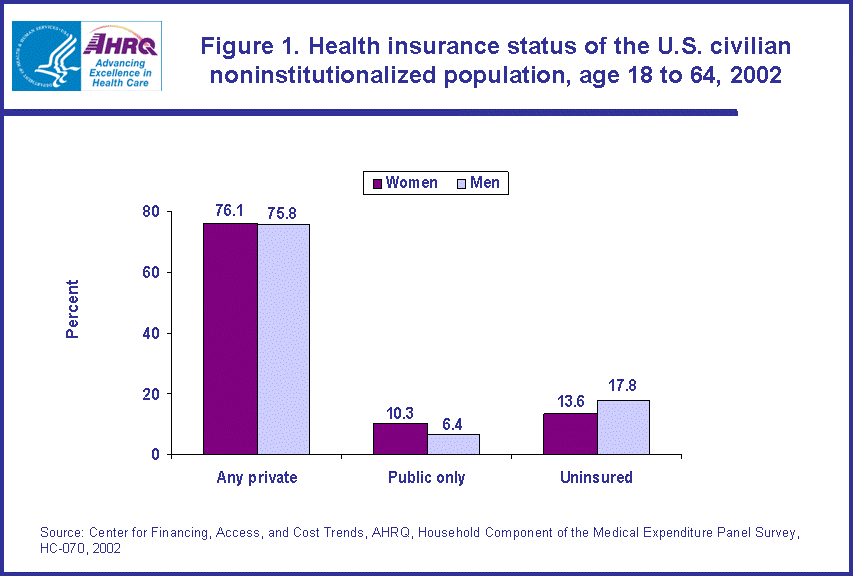 |
|||||||||||||||||||||||||
|
|||||||||||||||||||||||||
|
|
|||||||||||||||||||||||||
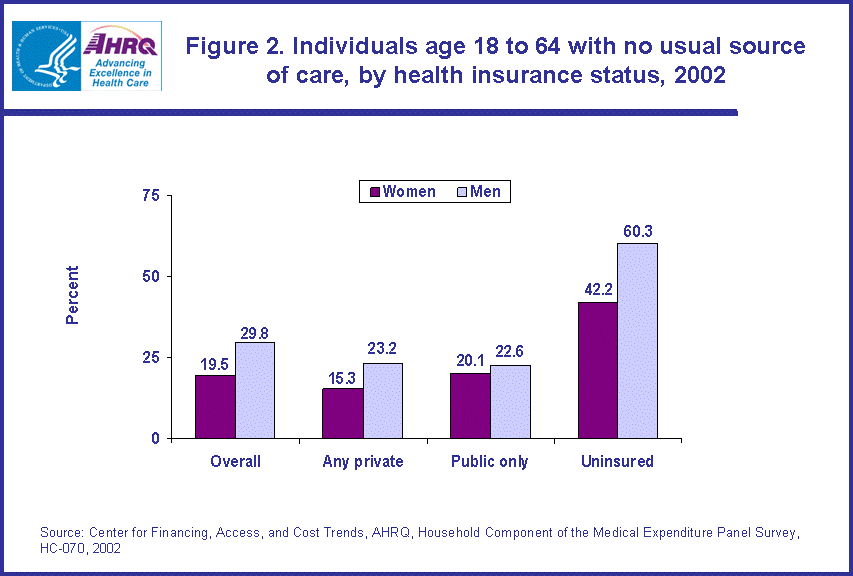 |
|||||||||||||||||||||||||
|
|||||||||||||||||||||||||
|
|
|||||||||||||||||||||||||
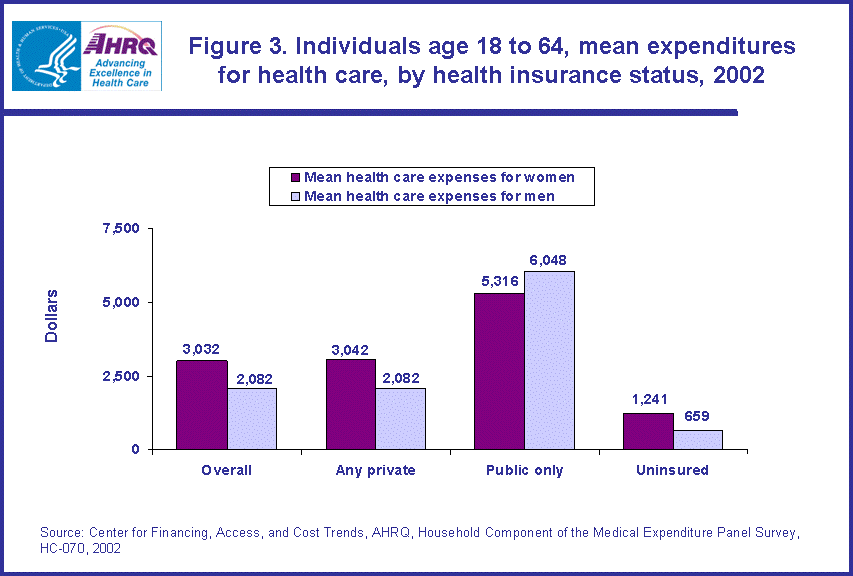 |
|||||||||||||||||||||||||
|
|||||||||||||||||||||||||
|
|
|||||||||||||||||||||||||
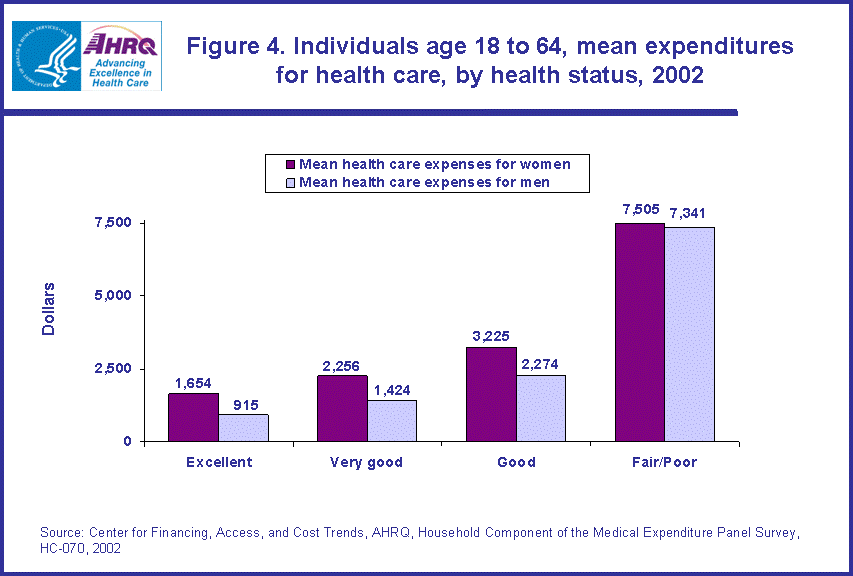 |
|||||||||||||||||||||||||
|
|||||||||||||||||||||||||
|
|
|||||||||||||||||||||||||
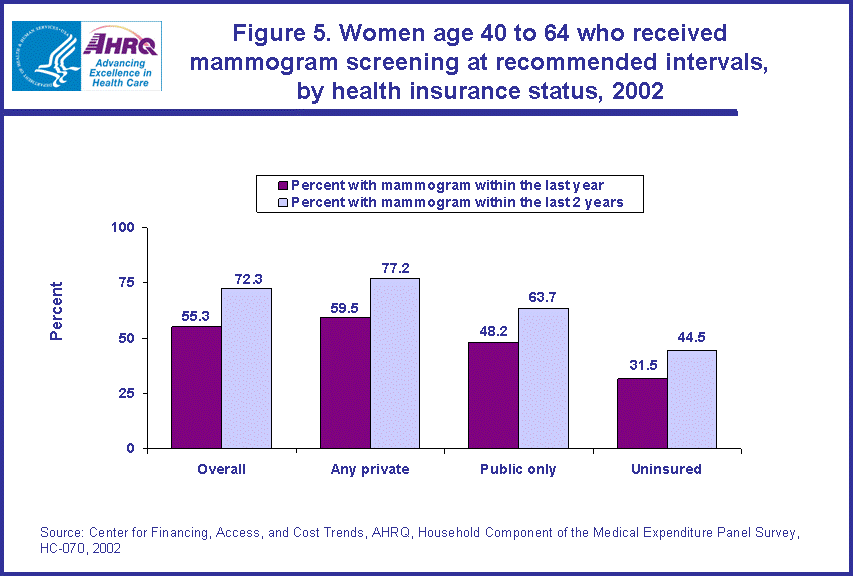 |
|||||||||||||||||||||||||
|
|||||||||||||||||||||||||
|
|
|||||||||||||||||||||||||
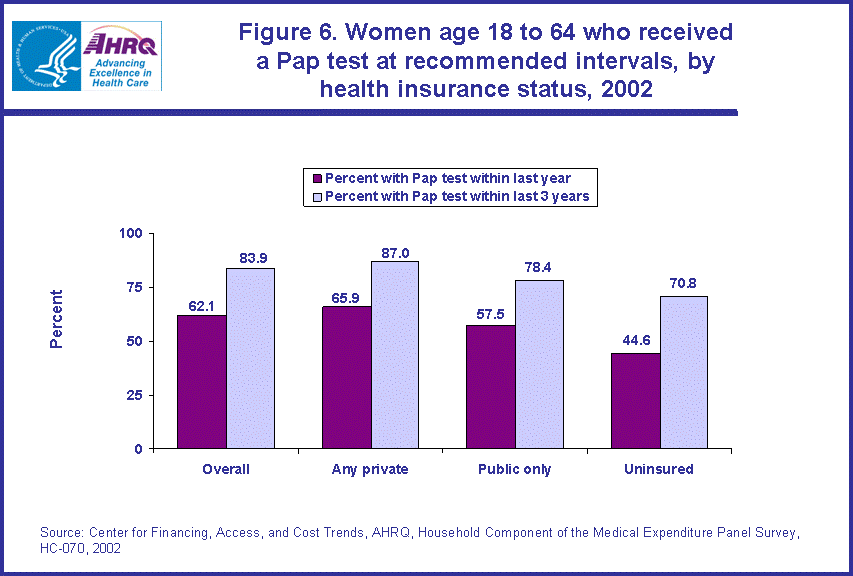 |
|||||||||||||||||||||||||
|
|||||||||||||||||||||||||
|
|
|||||||||||||||||||||||||
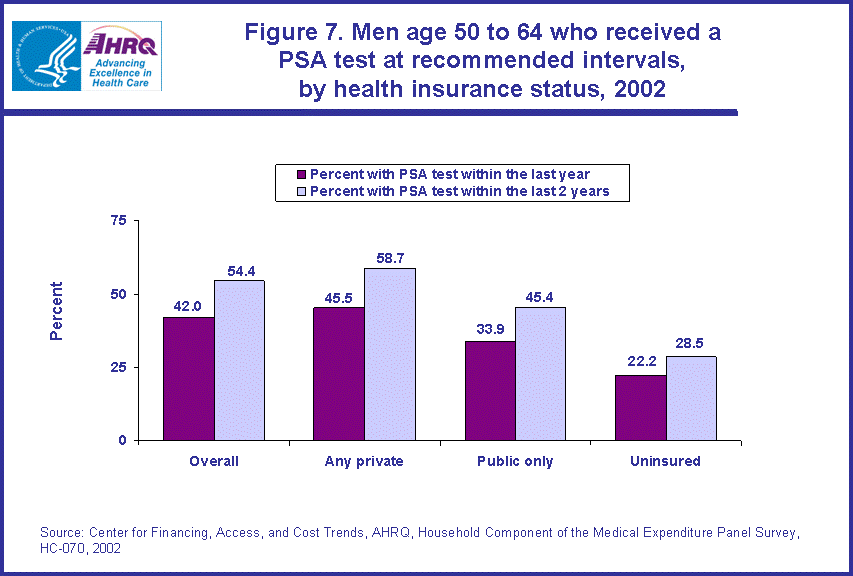 |
|||||||||||||||||||||||||
|
|||||||||||||||||||||||||
|
|
|||||||||||||||||||||||||


